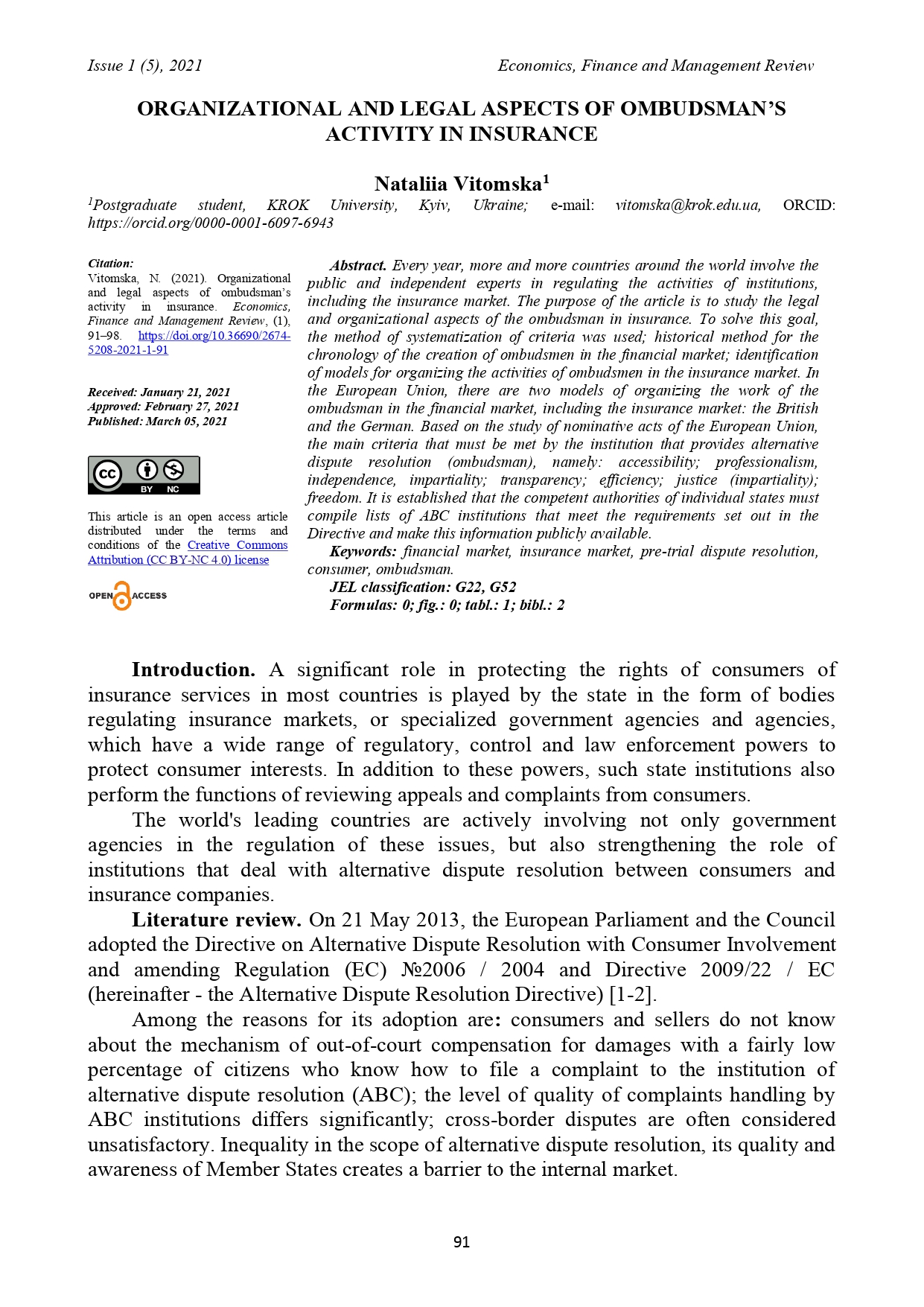ORGANIZATIONAL AND LEGAL ASPECTS OF OMBUDSMAN’S ACTIVITY IN INSURANCE
DOI:
https://doi.org/10.36690/2674-5208-2021-1-91Keywords:
financial market, insurance market, pre-trial dispute resolution, consumer, ombudsmanAbstract
Every year, more and more countries around the world involve the public and independent experts in regulating the activities of institutions, including the insurance market. The purpose of the article is to study the legal and organizational aspects of the ombudsman in insurance. To solve this goal, the method of systematization of criteria was used; historical method for the chronology of the creation of ombudsmen in the financial market; identification of models for organizing the activities of ombudsmen in the insurance market. In the European Union, there are two models of organizing the work of the ombudsman in the financial market, including the insurance market: the British and the German. Based on the study of nominative acts of the European Union, the main criteria that must be met by the institution that provides alternative dispute resolution (ombudsman), namely: accessibility; professionalism, independence, impartiality; transparency; efficiency; justice (impartiality); freedom. It is established that the competent authorities of individual states must compile lists of ABC institutions that meet the requirements set out in the Directive and make this information publicly available.
Downloads
References
Directive 2013/11/EU of the european parliament and of the council. Retrieved from: https://eur-lex.europa.eu/LexUriServ/LexUriServ.do?uri=OJ:L:2013:165:0063:0079:EN:PDF
World experience of insurance ombudsmen. Retrieved from: https://ipk.org.ua/svitovyy-dosvid

Downloads
Published
How to Cite
Issue
Section
License

This work is licensed under a Creative Commons Attribution-NonCommercial 4.0 International License.








